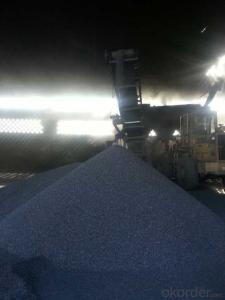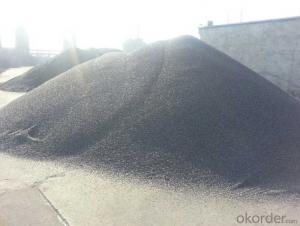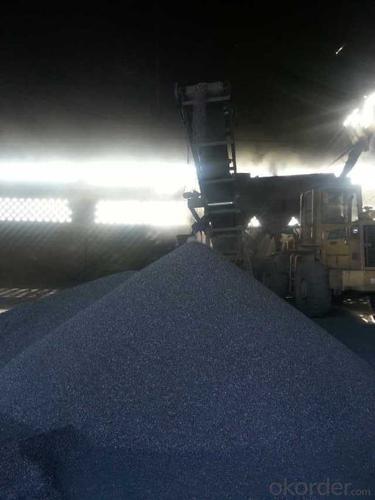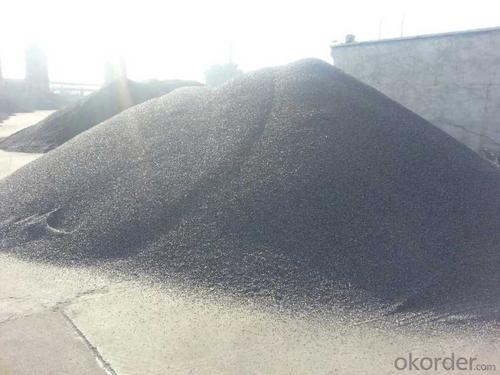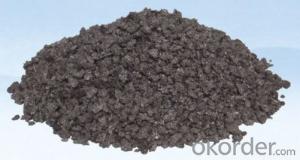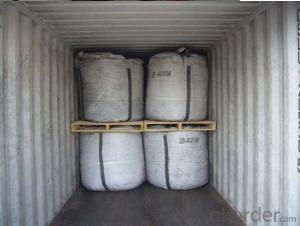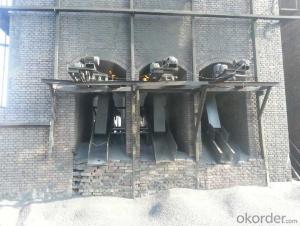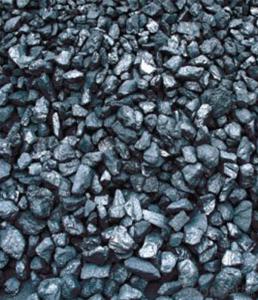Calcined Anthracite FC 80-90 for steel making
- Loading Port:
- Tianjin
- Payment Terms:
- TT OR LC
- Min Order Qty:
- 20 m.t.
- Supply Capability:
- 3000 m.t./month
OKorder Service Pledge
OKorder Financial Service
You Might Also Like
Packaging & Delivery
25kgs/50kgs/1ton per bag or as buyer's request
Specifications
Calcined Anthracite
Fixed carbon: 90%-95%
S: 0.5% max
Size: 0-3. 3-5.3-15 or as request
It used the high quality anthracite as raw materials through high temperature calcined at over 2000 by the DC electric calciner with results in eliminating the moisture and volatile matter from anthracite efficiently, improving the density and the electric conductivity and strengthening the mechanical strength and anti-oxidation. It has good characteristics with low ash, low resistvity, low sulphur, high carbon and high density. It is the best material for high quality carbon products.
Advantage and competitive of caclined anthracite:
1. strong supply capability
2. fast transportation
3. lower and reasonable price for your reference
4.low sulphur, low ash
5.fixed carbon:95% -90%
6..sulphur:lower than 0.3%
General Specification of Calcined Anthracite:
| FC | 80 | 83 | 85 | 88 | 90 |
| ASH | 16 | 14 | 13 | 10 | 8.5 |
| V.M. | 3 | 3 | 2 | 2 | 1.5 |
| S | 0.5 | 0.5 | 0.5 | 0.5 | 0.35 |
| MOISTURE | 2 | 2 | 1 | 1 | 0.5 |
Pictures
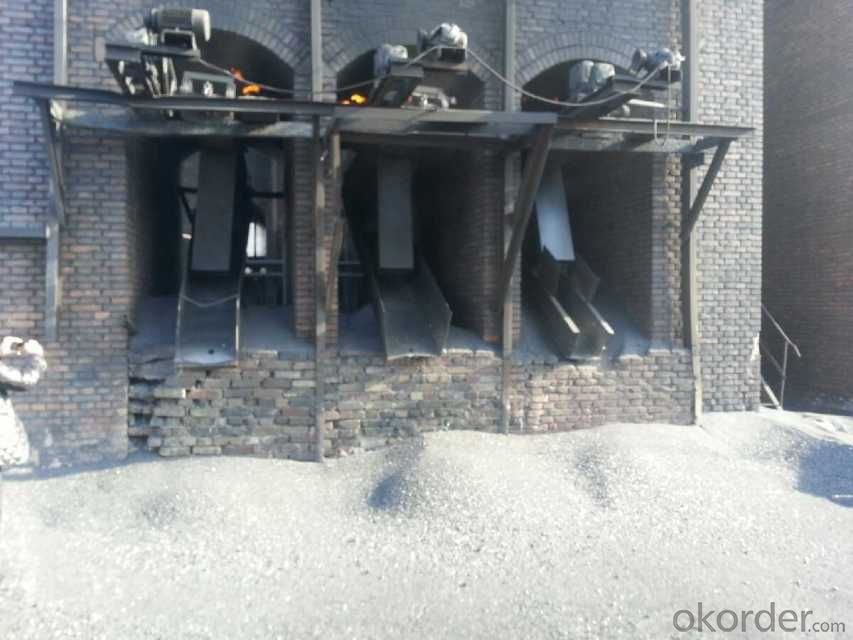
We are also strong at below materials, please contact us if you are interested in any of them:
Calcined Petroleum Coke
Carbon Electrode Paste
Carbon Electrode
- Q: How many points can Yongan change for 1 carbon coins?
- Every Thursday at 19:00, carbon points change for carbon coins, 19:30 carbon coins exchange gifts
- Q: What is the role of carbon in the formation of fossil fuels?
- Fossil fuels formation heavily relies on carbon, playing a vital role in the process. Coal, oil, and natural gas, which constitute fossil fuels, originate from the remnants of ancient plants and organisms that inhabited the Earth millions of years ago. These organisms possessed a significant amount of carbon, which serves as the primary constituent in fossil fuels. The formation of fossil fuels initiates with the decay of organic matter. Once plants and organisms perish, their remains gather in oxygen-deprived environments like swamps, lakes, and the ocean floor. These organic materials gradually become buried under layers of sediment, subjecting them to substantial pressure and heat. Under such extreme conditions, the organic matter undergoes diagenesis, a process that breaks down intricate organic molecules into simpler compounds. This procedure liberates gases such as methane and carbon dioxide. Nevertheless, the carbon-rich compounds that resist decomposition become the fundamental building blocks of fossil fuels. Over millions of years, the pressure and heat persistently alter these organic remains. The carbon-rich compounds undergo catagenesis, progressively transforming and forming hydrocarbon chains. This metamorphosis ultimately results in the creation of coal, oil, and natural gas, all of which consist mainly of carbon, hydrogen, and a few other elements. The carbon within fossil fuels accounts for their substantial energy content. Combusting fossil fuels releases carbon dioxide and other greenhouse gases into the atmosphere, contributing to climate change. However, carbon's indispensable role in the formation of fossil fuels lies in its provision of a concentrated energy source that has been pivotal to human civilization and industrial advancement.
- Q: Speak in detail! I am ~ carbon Roast Lamb Leg lamb chops lamb barbecue ah ~ ~ how to do with practice video line! And how do you bake the oven?
- Step 1: the leg with a knife cut, and then put into the seasoning pickled, according to the guests taste add salt, pepper, fennel, pepper and so on, this time can not add cumin. These ingredients should be fully blended and then applied to the surface of the meat. Then sealed with a sealed instrument to allow the meat to be fully salted and flavored, preferably 3 hours.
- Q: How does carbon affect the formation of permafrost thawing?
- The formation and thawing of permafrost can be greatly influenced by carbon. Permafrost, which consists of frozen soil, rock, and organic matter, remains at freezing temperatures for at least two consecutive years. It acts as a natural carbon sink, storing vast amounts of organic carbon from deceased plants and animals accumulated over thousands of years. As permafrost thaws, this stored carbon begins to decompose, releasing greenhouse gases like carbon dioxide and methane into the atmosphere. The carbon released from permafrost thawing contributes to the overall rise in greenhouse gas levels, worsening the effects of climate change. Furthermore, as permafrost thaws, it becomes more susceptible to erosion and subsidence, resulting in landscape changes and the additional release of carbon. This process can create a positive feedback loop, where the released carbon further speeds up permafrost thawing, leading to more carbon emissions. Moreover, the thawing of permafrost can also impact the stability of infrastructure constructed on frozen ground, such as roads, buildings, and pipelines, causing significant economic and environmental consequences. To summarize, carbon plays a crucial role in the formation and thawing of permafrost. The release of carbon from thawing permafrost contributes to climate change, accelerates the thawing process, and has various environmental and economic impacts. It is essential to address carbon emissions and find ways to mitigate permafrost thawing in order to combat climate change and preserve the stability of these frozen ecosystems.
- Q: What are the environmental impacts of carbon emissions from industries?
- The environmental consequences resulting from industries' carbon emissions are significant and extensive. To begin with, carbon emissions contribute to the greenhouse effect, resulting in global warming and climate change. The excessive release of carbon dioxide and other greenhouse gases into the atmosphere traps heat, leading to a rise in the Earth's temperature. Consequently, polar ice caps melt, sea levels increase, and extreme weather events like hurricanes and droughts occur. These alterations disrupt ecosystems, cause biodiversity loss, and jeopardize the survival of various species. Furthermore, carbon emissions contribute to air pollution. Industries release not only carbon dioxide but also harmful pollutants like sulfur dioxide, nitrogen oxides, and particulate matter. These pollutants have adverse effects on human health, causing respiratory and cardiovascular problems, and even premature death. Additionally, they contribute to the creation of smog and acid rain, causing further harm to ecosystems and endangering plant and animal life. Moreover, carbon emissions from industries negatively impact water systems. When carbon dioxide dissolves in water, it forms carbonic acid, resulting in a decrease in pH levels and increased acidity. This acidification harms marine life, especially organisms with calcium carbonate shells or skeletons, such as coral reefs, shellfish, and plankton. The disruption of marine ecosystems can have a ripple effect on other species and disturb the food chain. Lastly, carbon emissions contribute to deforestation and habitat destruction. Industries often rely on fossil fuels for energy, leading to the clearing of forests to make way for mining or drilling operations. This destruction of natural habitats not only reduces biodiversity but also releases stored carbon from trees into the atmosphere, exacerbating the carbon emissions problem. To address these environmental impacts, industries must prioritize the reduction of carbon emissions. This can be achieved by adopting cleaner and more sustainable energy sources, implementing energy-efficient technologies, and enforcing stricter regulations and policies. Transitioning to renewable energy, improving industrial processes, and investing in carbon capture and storage technologies are vital steps toward mitigating the environmental consequences of industries' carbon emissions.
- Q: How does carbon contribute to the strength of alloys?
- Carbon contributes to the strength of alloys by forming interstitial solid solutions with metals, which increases the hardness and strength of the material. The carbon atoms occupy the spaces between the metal atoms, creating lattice distortions and enhancing the overall strength of the alloy. Additionally, carbon can also form compounds with metals, such as carbides, which further improve the hardness and wear resistance of alloys.
- Q: What is carbon neutral construction?
- Carbon neutral construction refers to the process of designing, constructing, and maintaining buildings in a way that minimizes their carbon footprint and offsets any remaining emissions. This involves using sustainable materials, implementing energy-efficient systems, and utilizing renewable energy sources to achieve net-zero carbon emissions throughout the building's lifecycle.
- Q: What are the properties of carbon-based lubricants?
- Carbon-based lubricants, also known as hydrocarbon-based lubricants, have several unique properties that make them highly effective in various applications. Firstly, carbon-based lubricants have excellent thermal stability, allowing them to maintain their lubricating properties even at high temperatures. This property is particularly important in applications such as aerospace and automotive industries where components operate under extreme conditions. Secondly, carbon-based lubricants possess exceptional lubricity, reducing friction and wear between moving parts. This characteristic is crucial in machinery and equipment where minimizing friction is vital to ensure smooth operation and prevent damage. Carbon-based lubricants also have high load-carrying capacities, enabling them to withstand heavy loads and prevent metal-to-metal contact, which can lead to premature wear and failure. Moreover, carbon-based lubricants exhibit good oxidation resistance, preventing the formation of harmful sludge and deposits that can interfere with machinery performance. This property extends the lubricant's lifespan, ensuring long-term effectiveness and reducing the frequency of lubricant replacements. Additionally, carbon-based lubricants have low volatility, meaning they have a low tendency to evaporate. This property is advantageous in applications where lubricant loss needs to be minimized, such as in sealed systems or high-temperature environments. Furthermore, carbon-based lubricants are generally compatible with a wide range of materials, including metals, plastics, and elastomers. This compatibility ensures that the lubricant does not cause damage or degradation to the surfaces it comes into contact with, allowing for versatile use across different industries and applications. Overall, the properties of carbon-based lubricants, including thermal stability, lubricity, load-carrying capacity, oxidation resistance, low volatility, and material compatibility, make them highly desirable for various lubrication requirements, ranging from automotive and industrial machinery to aerospace and marine applications.
- Q: Whether the CO2 content in the boiler smoke can not be measured, the measurement of carbon content of fly ash ah? @ @ Thank you very much!!!
- No The amount of unburned carbon in the fly ash is not carbon dioxide.CO2 measurements are simple.
- Q: How do you make your own carbon fiber bar?Know. ID is how to make? Don't copy anything that has nothing to do with it
- Carbon fiber rods, generally used in fishing rods, medical and construction fields, the molding process is pultrusion.Pultrusion: traction carbon fiber yarn (carbon fiber yarn is usually 12K, 24K based) impregnated epoxy resin, by heating 130 degrees or so, high temperature curing molding.Specific molding process can be consulted.
Send your message to us
Calcined Anthracite FC 80-90 for steel making
- Loading Port:
- Tianjin
- Payment Terms:
- TT OR LC
- Min Order Qty:
- 20 m.t.
- Supply Capability:
- 3000 m.t./month
OKorder Service Pledge
OKorder Financial Service
Similar products
Hot products
Hot Searches
